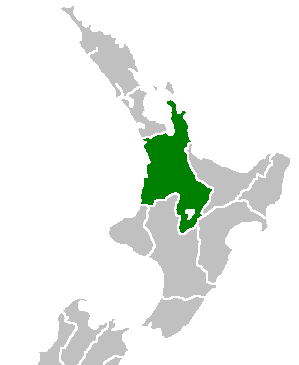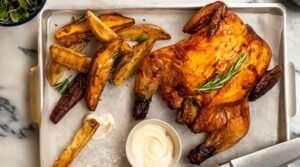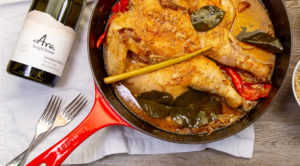Chicken Cuts Recipes & Tips

Where to buy
We recommend Waitoa free-range chicken. Their farms are situated in the lush, green valleys of the Waikato region, and they provide New Zealand with ethically grown nutritious, quality chicken. This region has a reputation as one of the richest pastoral areas in the world, with the Waikato River creating a huge fertile basin rich in agriculture and farming.

The Cuts
A chicken can either be used as a whole bird or be divided into different cuts. These are legs, drumstick, wing, thigh, breast and ground mince. Below is some information about each cut and a recipe to try.

Whole Chicken
Making a whole chicken is probably the most economical way to eat chicken because it can provide more than one meal for your family. You can roast, poach or slow cook a whole chicken, and everyone can choose (or fight over) their favourite type of meat. Use the leftover cooked meat in sandwiches and salads. Save the cooked bones for making chicken stock, which can then be used in soup, casseroles and gravy.
Spatchcock
Often referred to as a butterflied chicken, The chicken backbone is cut and removed, thus allowing it to be completely opened out and flattened. Significantly reducing the cooking time and allows the whole bird to be cooked in speedier ways, such as BBQ.
Breast
Chicken breast is called 'white meat' and is very lean, and it is the most common cut to slice up in stir-fries, marinate, grill or pan-fry. Chicken breasts can also be baked or poached and used in salad, sandwiches or shredded. Sometimes you see smaller cuts of the breast called Tenderloins. They are slightly more tender than the whole breast and are ideal to crumb or quickly cook and toss in a salad. Usually, chicken breast in the supermarket comes with skin off. If you want skin on for a particular recipe, you may need to ask your local butcher. A supreme cut is the chicken breast with wingette attached and skin on. When you leave the skin on the chicken, it forms a perfect little pocket that can be stuffed with bacon, cheese, mushrooms, spinach etc.
Thighs / Legs
Chicken thighs are usually bought as fillets with skin and bone removed. However, your butcher will be able to sell thighs in any combination of bone and skin you wish. Chicken thigh meat is called 'brown meat' and naturally has a bit more fat, which helps it stay moist when cooked. It often has more flavour than the breast. Ideal for curries, casseroles, tagines, tray bakes and slow cooking. You can also buy whole chicken legs. These are the thighs and drumstick still together with the skin on (sometimes called Marylands).
Drums
Chicken drumsticks are usually cheaper cuts of chicken, and they mostly come with the skin on. Often a big hit with the kids baked in a honey and soy marinade and eaten with fingers.
Wings
Chicken wings are not as popular in NZ, probably because they do not have much meat. Yummy as an American style entrée—spicy chicken wings dipped in a blue cheese sauce.
Mince
Chicken mince, like beef or lamb mince, is perfect for burgers and meatballs, great in Mexican food like tacos or enchiladas.
Livers
Chicken livers are an excellent source of nutrients, fabulous as a paté or fried up with some onions and tomato paste.
Chicken Stock
Nothing is better than homemade chicken broth! A great idea is to stash offcuts of carrots, onion, celery and leeks in the freezer. Next time you cook a whole chicken, you can use the bones and add these veggie scraps for flavour.
Tips
It is best to defrost chicken in the refrigerator for 1–2 days before using, depending on the size of the chicken.
Wash hands thoroughly in hot, soapy water before you handle chicken.
Make sure surfaces and utensils used for raw chicken are clean and keep them separate from all other food—never put cooked chicken on a surface that raw chicken has been on. Always clean surfaces and utensils raw chicken has touched immediately, and do not reuse any cloths.
Do not wash chicken, as this increases the risk of cross-contamination. As long as the chicken is cooked at a high enough temperature, the bacteria will be killed. When finished cooking, it should not show any pink in the centre. If whole, the legs should pull away easily in their joints. Tilting or piercing the chicken so the juices run out should show clear juices.















